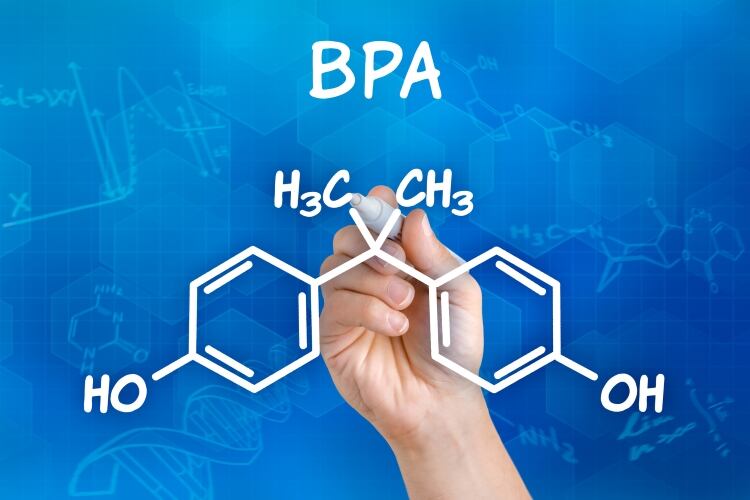The study, done by scientists at the Department of Veterinary Medicine and Animal Production, University of Naples, and the Istituto Zooprofilattico Sperimentale del Mezzogiorno, in Portici, was published in the February issue of the Journal of Dairy Science.
The authors say the study, for the first time, investigated the occurrence of BPA levels in cow milk samples collected on the farm following manual or mechanical milking and from the cooling tank.
BPA hazards
BPA is an organic compound readily biodegraded under aerobic conditions in soil and sediments.
The industrial chemical is widely used in the production of polycarbonate plastics (used in food contact materials), epoxy resins (as internal coating in canned food), and as an antioxidant in polyvinyl chloride (PVC) materials intended to come into contact with food.
The authors state that under normal conditions of use, BPA tends to leach from food containers and may be detected in human biological matrices. Because BPA is an endocrine disruptor, it is assumed to have toxic effects on metabolism, growth, sexual development, stress response, insulin production, gender behavior, reproduction, and fetal development, and it is also considered a contributing factor in the onset of metabolic disorders, including diabetes and obesity, and immune dysfunction.
The researchers say that environmental pollution may represent a contamination source of the milk chain because BPA residues are stored in adipose tissue, secreted in cow milk fat, and accumulated in fat dairy products. Also, on the farm, BPA may be introduced during milking from plastic parts (plastic resins, PVC tubing) of milking machines or during transfer from bulk milk to storage tanks.
Thus, they note, BPA residues may be concentrated in the final product, reaching high contamination levels by the end of milk processing. At the dairy company, the migration of BPA from packaging materials into cow milk or dairy products could be a further cause of contamination. Even though many studies have reported the occurrence of BPA in milk for human consumption, data on the levels and contamination pathways along the dairy chain are scarce, the authors say.
Monitoring
The new monitoring model was designed to identify potential pathways for contamination along the milk chain.
Seventy-two milk samples were analyzed using liquid chromatography with fluorescence detection.
The study found that the mean BPA concentrations were 0.757 µg/L in manually milked samples, 0.580 µg/L in mechanically milked samples, and 0.797 µg/L in milk from the cooling tank.
BPA occurred in the milk chain as a result of different stages of milking, and reached the highest levels at the end of the milk chain. Although the dietary intake of BPA was below the EFSA's temporary tolerable daily intake, exposure to BPA, even at low doses, through milk consumption represents a public health concern, the authors noted.
Recommendations
The researchers concluded that the age at which an organism is exposed to an endocrine disruptor can be crucial, because although very low doses can have lasting effects during human development, higher levels are needed to produce harmful effects in adults.
Considering the nature of the potential adverse effects, they said further precautionary steps should be taken in vulnerable population groups, and a specific tolerable daily intake for infants should be recommended.
They also suggest the proposed contamination pathways should be further explored, according to a new model of risk assessment based on identifying hazards at each stage of the milk chain.
The study recommends that, to ensure milk safety, new monitoring plans should be applied based on the identification of hazards at each stage of the milk chain.
Journal of Dairy Science
Hot topic: Bisphenol A in cow milk and dietary exposure at the farm level
Carmela Ferrante, Nicoletta Murru, Pasquale Gallo, Raffaelina Mercogliano

